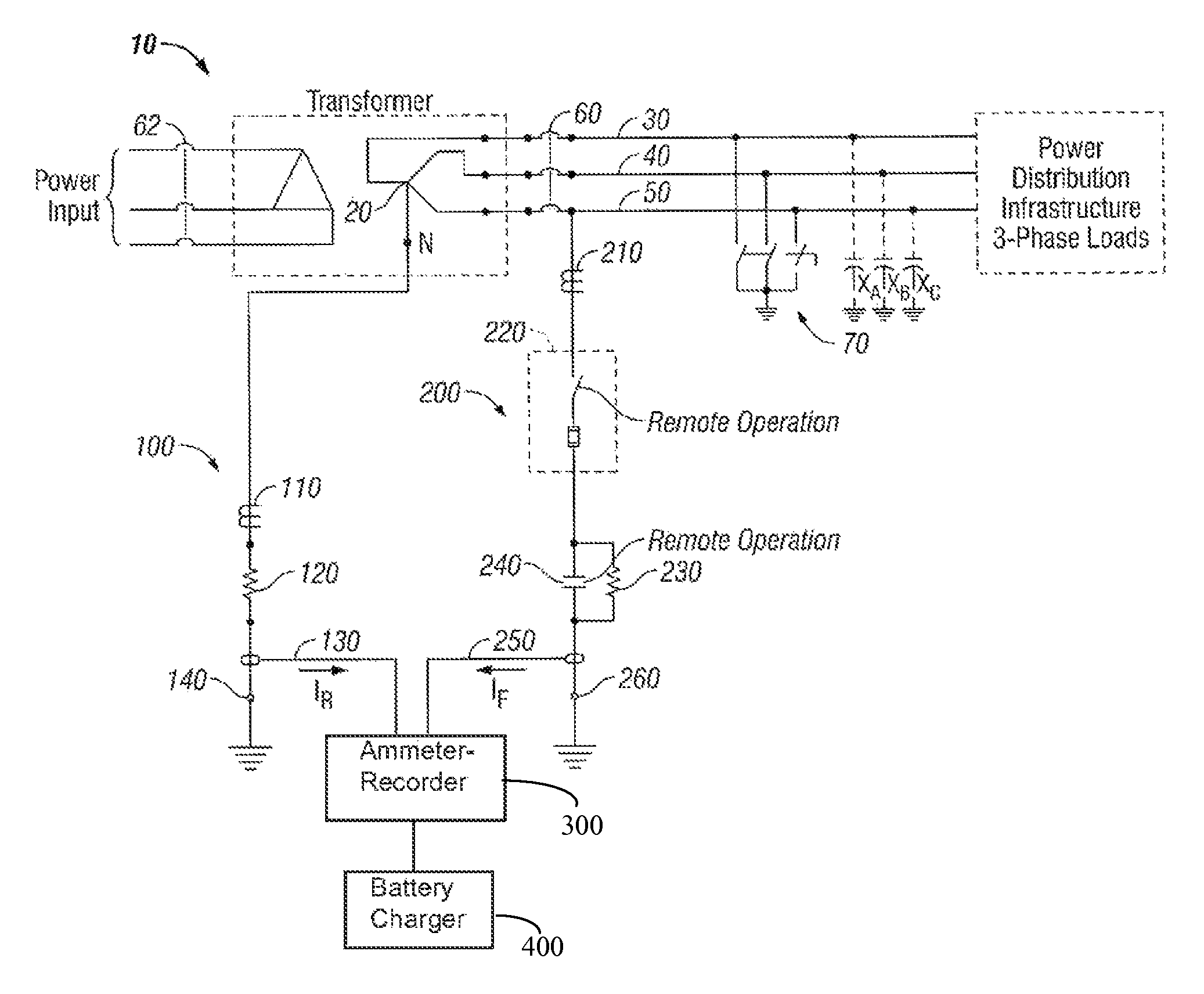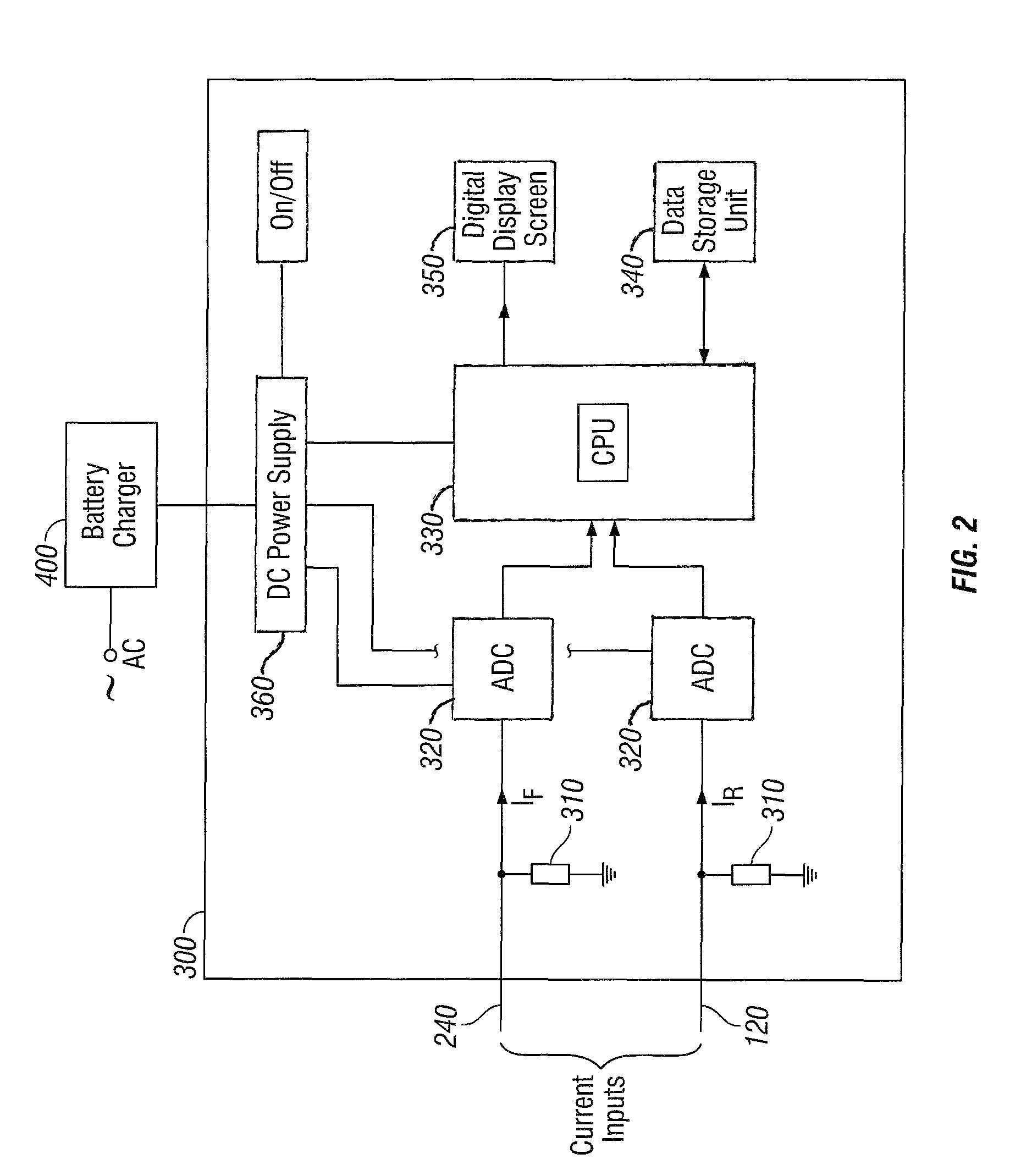System and method for determining system charging current
a charging current and system technology, applied in the field of three-phase electrical power systems, can solve problems such as arcs, unpredictable electrical arc hazards and associated effects on electrical equipment, and insulation between phase-to-phas
- Summary
- Abstract
- Description
- Claims
- Application Information
AI Technical Summary
Benefits of technology
Problems solved by technology
Method used
Image
Examples
Embodiment Construction
[0013]System charging current of the three-phase power system circuit 10 described and illustrated in FIG. 1 may be determined and recorded using the present method described below. The three-phase power feeder circuit 10 may have a first grounding circuit 100 interconnected with its neutral 20. The first grounding circuit 100 may have, in electrical series interconnection: a first remotely operated relay 110, a first resistor 120, a first interconnection 130 with an ammeter-recorder 300, and a first grounding electrode 140. A second grounding circuit 200 may be interconnected with any one of the three phases 30, 40, or 50 of the feeder circuit 10, and may have, in electrical series interconnection: a second remotely operated relay 210, an interrupter switch 220 which may be fused as shown, a second resistor 230 shunted across a contactor 240, a second interconnection 250 with the ammeter-recorder 300, and a second grounding electrode 260. As shown in FIG. 1, feeder circuit 10 may h...
PUM
 Login to View More
Login to View More Abstract
Description
Claims
Application Information
 Login to View More
Login to View More - R&D
- Intellectual Property
- Life Sciences
- Materials
- Tech Scout
- Unparalleled Data Quality
- Higher Quality Content
- 60% Fewer Hallucinations
Browse by: Latest US Patents, China's latest patents, Technical Efficacy Thesaurus, Application Domain, Technology Topic, Popular Technical Reports.
© 2025 PatSnap. All rights reserved.Legal|Privacy policy|Modern Slavery Act Transparency Statement|Sitemap|About US| Contact US: help@patsnap.com



